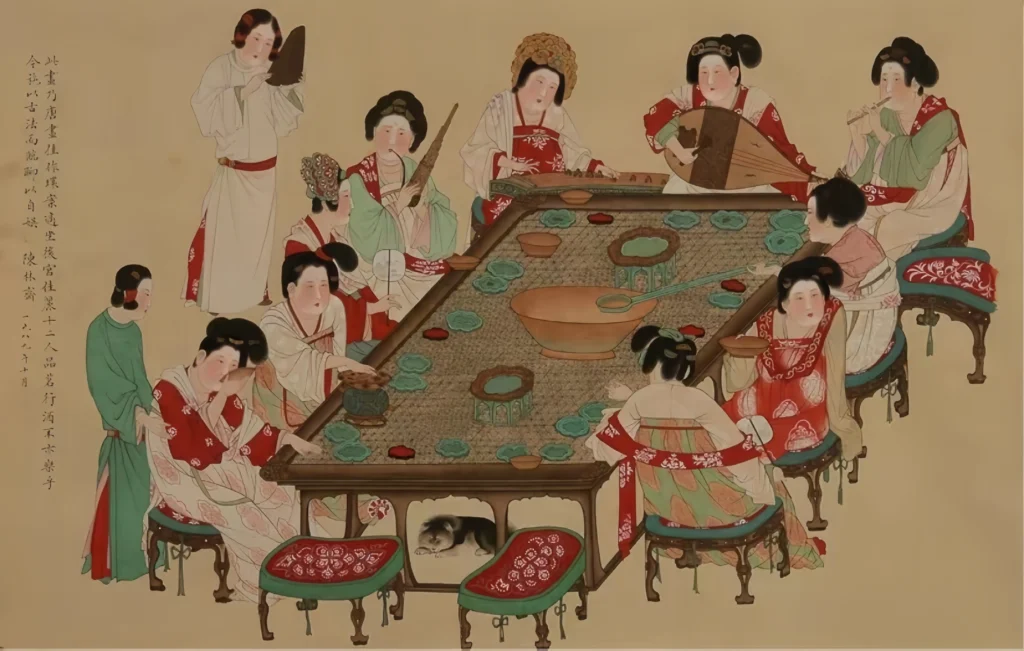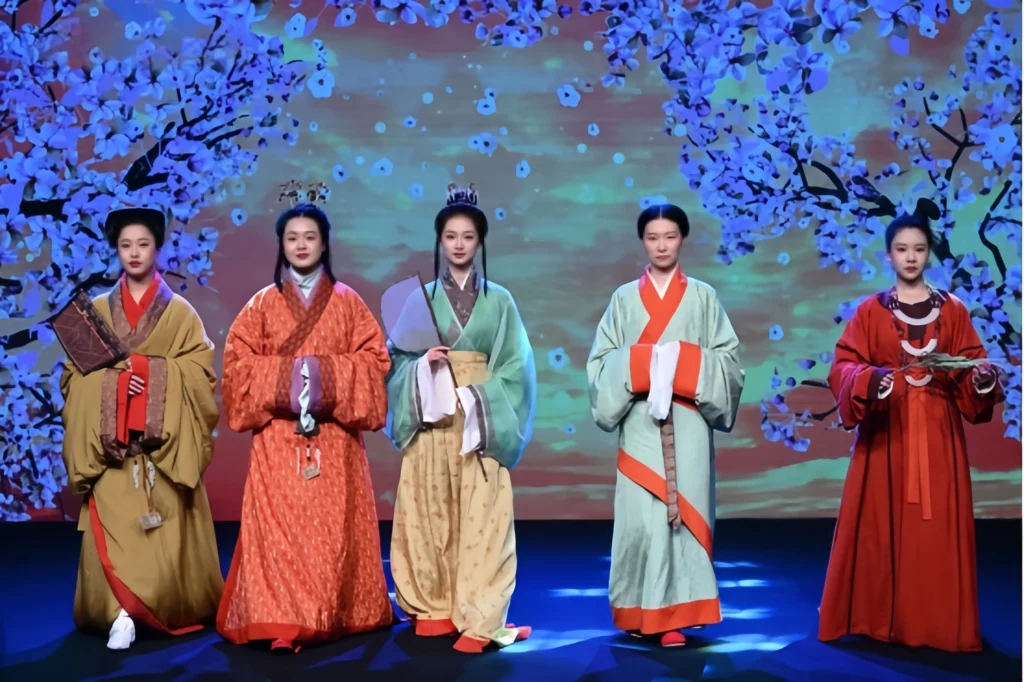汉服秀:终南山古装复兴
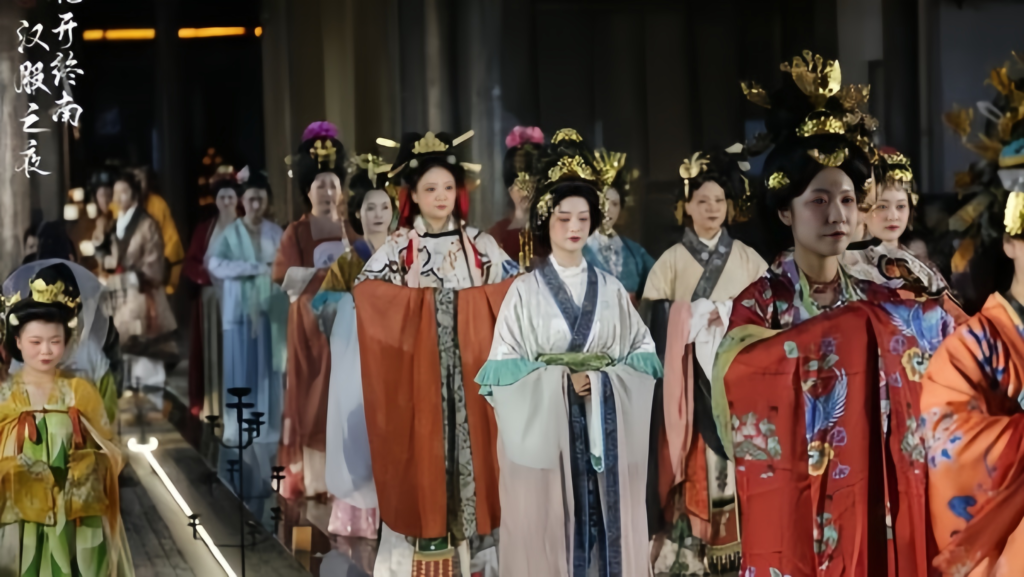

Hanfu show
Recently, the night of Zhongnan Mountain became dazzling and extraordinary due to an event named “Flowers Bloom in Zhongnan · Hanfu Night.” This event, organized by the China Traditional Culture Promotion Association · Hanfu Professional Committee, is not only a fashion feast but also an in-depth exploration and display of Chinese traditional clothing culture, with a special focus on Hanfu show and the restoration of traditional garments.

In this event, more than 50 models from all over the country walked onto the runway wearing exquisite Hanfu styles from different dynasties, taking the audience back to those magnificent moments in history. From the graceful beauty of the Pre-Qin period, the unparalleled elegance of the Tang Dynasty, to the graceful and refined style of the Song Dynasty, each period’s attire was carefully restored, presenting the profound cultural heritage of Chinese civilization and exquisite clothing artistry through Hanfu restoration.
Hanfu styles from different dynasties
The “Revival of the Chinese Dragon’s Pulse” exhibition restored famous ancient paintings such as “Portrait of Lady Li,” “The Tapestry of the Tang Dynasty,” “Walk of the Carriage,” “The Lady with Hairpin,” “The Music of the Song Dynasty,” and “The Morning Emperor.”
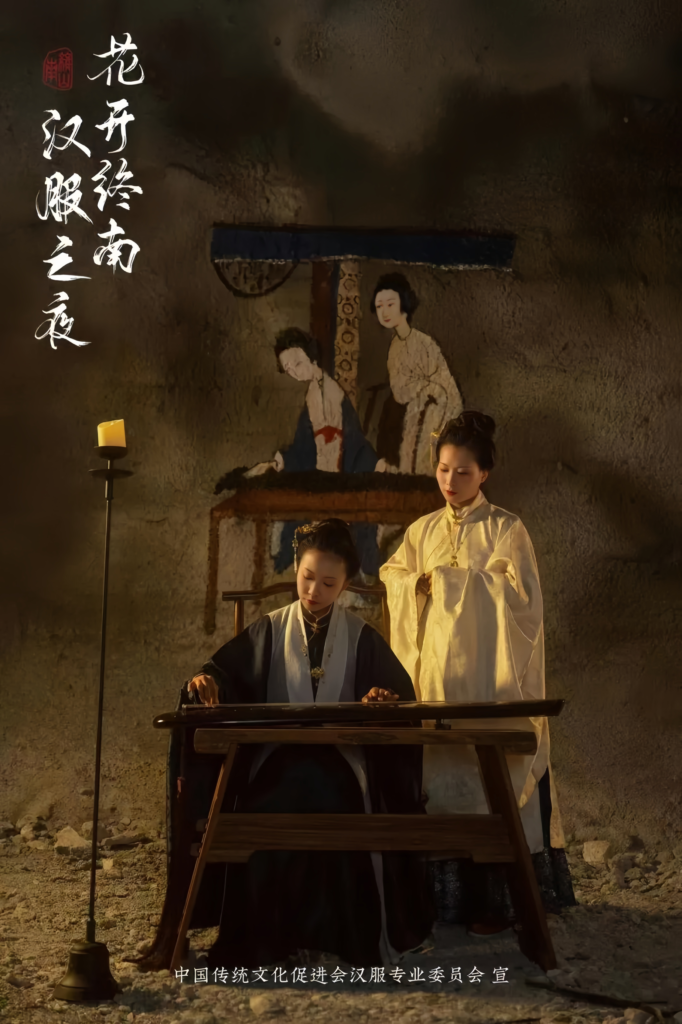
Restored from “The Painting of the Four Arts of the Scholar,” a standing woman wears a long-sleeve garment with a straight collar and Pipa sleeves, typical of the Ming Dynasty style.
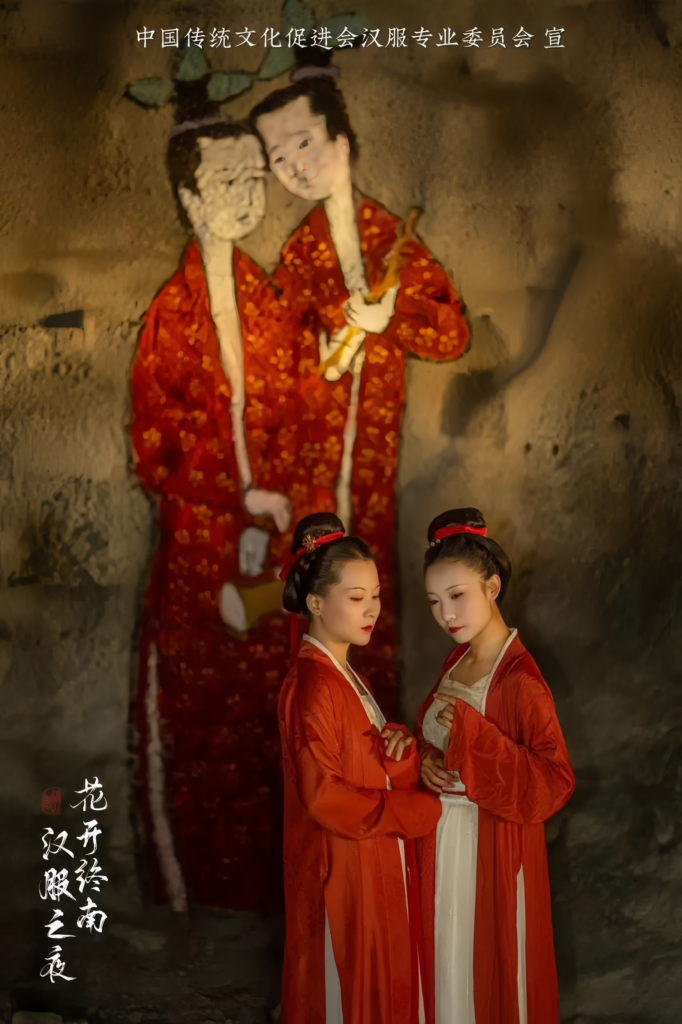
Restored from “The Music of the Song Dynasty,” the woman in the painting wears an outer robe called “Bianzi” (a kind of cloak), a style popular during the Northern Song period and carried on through the Southern Song Dynasty. This type of Hanfu is the most common covering style, with a collar that runs through the hem and various lengths of garments, with slits on the sides.
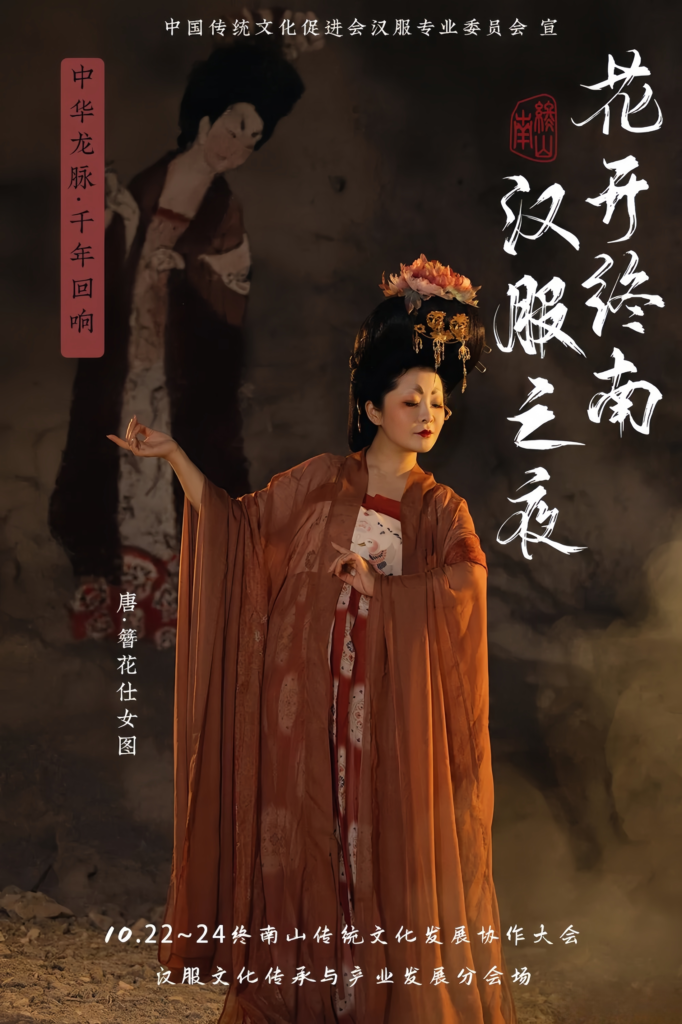
Restored from “The Lady with Hairpin,” the model wears a loose, comfortable, diagonal-collared, large-sleeve tunic, with a long skirt dragging on the ground, and a transparent veil wrapped around both sides.

Restored from “The Portrait of Lady Li,” the woman in the painting wears a wide-sleeve Ru skirt with an embroidered apron.

Restored from “The Tapestry of the Tang Dynasty,” three models wear chest-high shirts and skirts, with silk draped over their shoulders. From the narrow sleeves and the patterned shirt skirts, it is clear that these are typical of the prosperous Tang style.
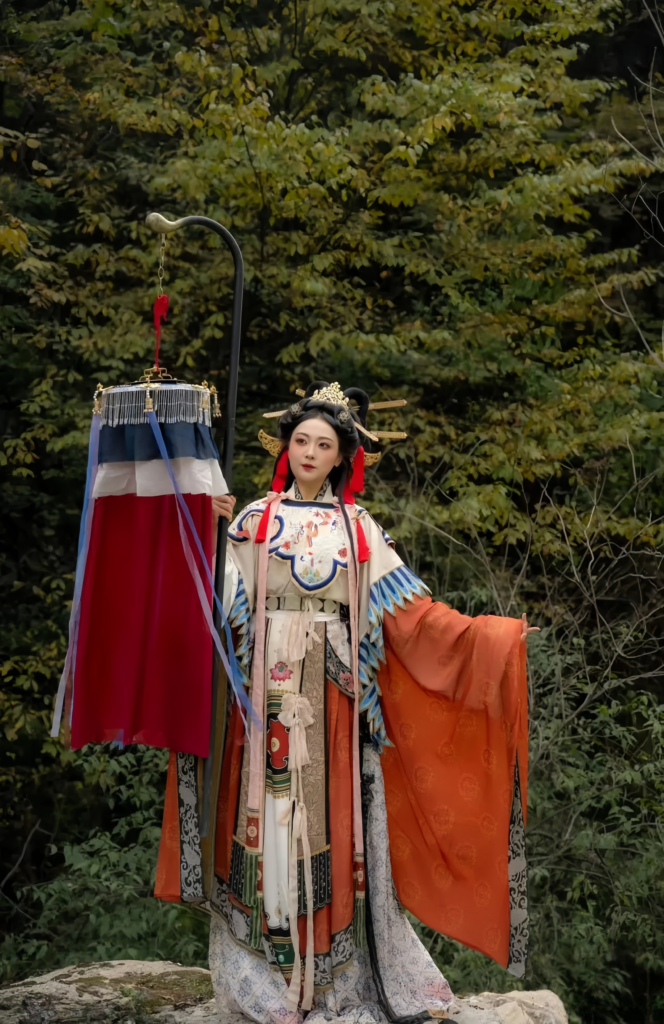
In Zhongnan Mountain, ascending to immortality.
The image of the joyous mother in the immortal painting comes to life before our eyes.
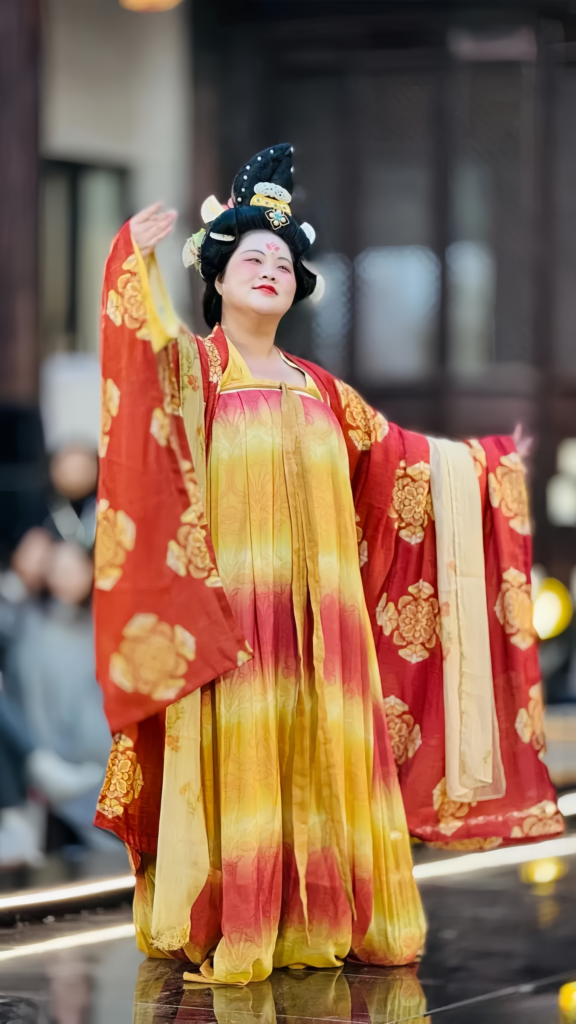
The red and yellow chest-high skirts fully display the grandeur of the Tang Dynasty.
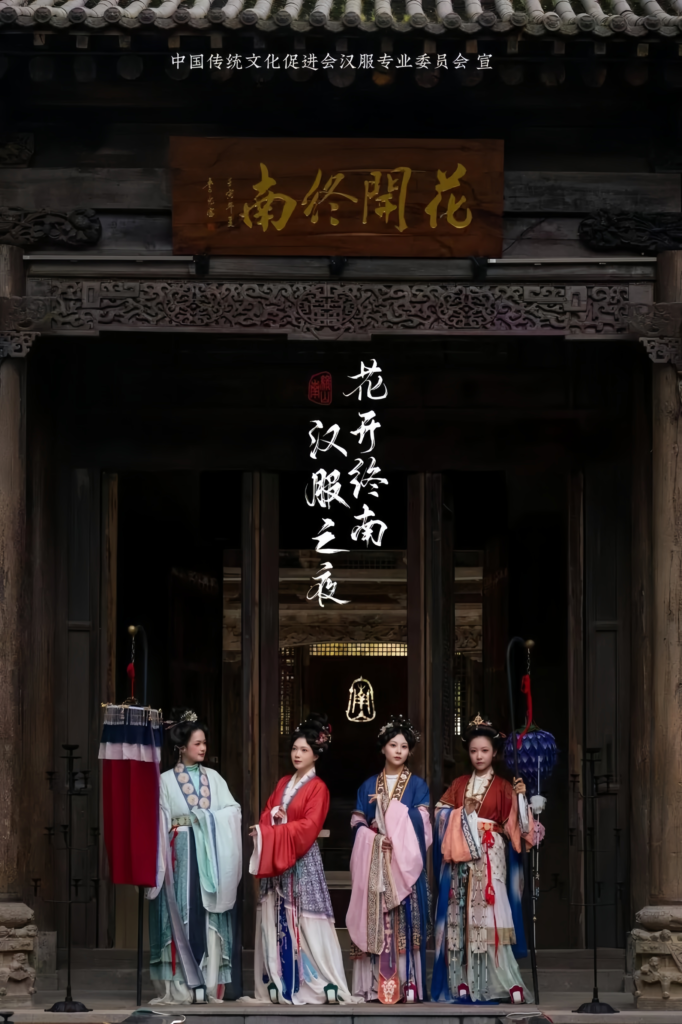
In modern society, Hanfu, as an important part of Chinese traditional culture, is gradually receiving more attention and love. “Flowers Bloom in Zhongnan · Hanfu Night” not only showcased the beauty of Hanfu styles from different dynasties but also made more people aware of the preciousness of traditional culture and its future possibilities. The stunning performances at the event allowed people to see the possibility of the perfect combination of tradition and modernity and also the power of inheriting and innovating Hanfu restoration.
This event attracted not only Hanfu enthusiasts but also many people interested in traditional culture. It has been reported by many mainstream media outlets, including China.com, Global Times, Oriental Finance, and People’s Political Consultative Conference News. Everyone witnessed this grand event aimed at promoting and protecting Hanfu culture, experiencing the charm and vitality of Chinese traditional culture.
Through events like “Flowers Bloom in Zhongnan · Hanfu Night,” we are more certain that Hanfu is not only a legacy of history but also a hope for the future. Let us look forward to more such events in the future, allowing more people to understand, love, and participate in the inheritance and promotion of Hanfu culture.


